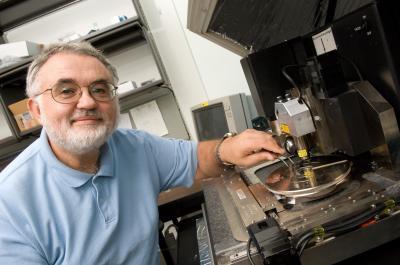
Dr. Vladimir Tsukruk, a Professor of Georgia Tech’s School of Materials Science and Engineering, has worked in partnership with a team of colleagues and a group from the Wright Patterson Air Force base to construct a protective cell covering to increase cell survivability. With their final goal in mind, the team collaborated to research and improve the cell shells. A very accurate, complex science is involved in creating a cell coating of appropriate thickness and permeability. The microscopic membrane must be thin enough so as to not block nutrients from entering the cell, but not so weak that the cell becomes unstable and decays.
Tech’s Professor Tsukruk explains that, previously, the trick has been in altering cationic and anionic polymer layers in a precise fashion. This adjustment of ionic forces, however, proved to be a rather invasive method and needed improvement. The accomplished team discovered that if the cell coating is constructed using hydrogen bonding instead of the modification of ionic forces, the procedure will cause less disruption to the cell. This newly-devised process involves two biocompatible components, tannic acid and poly(N-vinyldyrrolidone), that, when used in conjunction with one another, form a pH stable shell that is porous enough to allow vital cell nutrients to pass through the structure.
With this in mind, Tsukruk and his team have developed a procedure that increases cell survivability by about three days with up to a 60% greater chance of survival during that time. This can be implemented to allow for the application of living cells for bone repair, biosensors, and tissue engineering.
